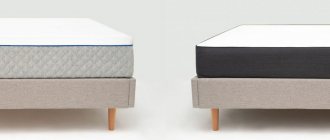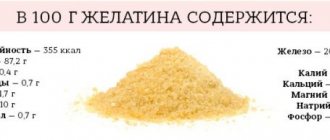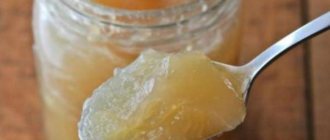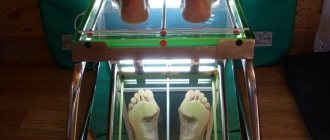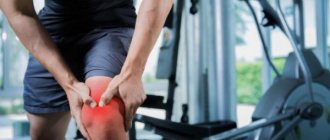Gelatin is a thickener that turns liquid into solid. It is most often used in confectionery. It is added to fillings, mousses, creams, cakes and cheesecakes. The word gelatin has Latin roots. Derived from the verb gelāre, which means to freeze. It is believed that the most ancient forms of gelatin were used not for cooking, but as a glue. Gelatin began to be used in cooking in the early 19th century. Most gelled dishes up to this point were prepared and gelled by boiling veal feet.
Composition and properties of gelatin
Gelatin consists of 85-90% collagen protein, which is produced from pork or bovine skin and bones. Available in the form of powder, granules and sheets.
- Gelatin is put into operation in hot liquid (above 50 °C). If you add gelatin to cold or warm cream, it will not dissolve and the mass itself will not harden.
- Gelatin is stabilized at temperatures below 15 °C. If you leave the jelly in the room, it will never harden. Place all gelatin fillings and cakes in the refrigerator or freezer to stabilize. The same applies to storing desserts. If you leave the mousse cake at room temperature, it will become soft, may lose its shape and even leak (free water will leak out, although this happens very rarely, this is usually due to a violation of the cooking technology). Therefore, remember that the storage temperature of cakes and desserts is not higher than +15 ° C - this means that we always store them in the refrigerator.
- Visible signs of gelation appear fairly quickly as the jelly cools. It is important to know that maximum strength and stability occur after 12 hours. Therefore, cake fillings, cheesecakes and the cakes themselves are always prepared in advance.
- Gelatin is thermoreversible. If you melt it and then cool it, it will become solid. We use this property when we add gelatin to a hot liquid. Or let's look at the property of thermoreversibility from the other side. If we froze the cake and then heated it to room temperature, then freezing will preserve the effect and properties of gelatin, and the dessert will remain in a stable solid state. The main thing is not to heat it back to 50 ° C, otherwise it will become liquid.
- Cream or curd cheese should not be frozen, as it will separate into water and fat. And if you make jelly or cheesecake with gelatin from them, then everything will turn out great. There will be no phase separation.
- The gelatin filling melts at temperatures above 35 °C as soon as a piece of jelly enters the mouth. This is its difference from marmalade on agar, which remains solid.
Beneficial features
Gelatin is rich in the protein collagen, which is essential for maintaining skin firmness and elasticity. With regular consumption of gelatin or dishes based on it, you can slow down the aging of facial skin and the appearance of wrinkles. In addition, thanks to collagen, the condition of the hair improves - it becomes stronger, shiny and elastic.
Collagen is also part of the joint ligaments, so it should be consumed by people with degenerative diseases of the musculoskeletal system (arthrosis, chondrosis). And regular consumption of dishes with gelatin will help reduce the risk of wear of cartilage and joints by maintaining normal levels of collagen in the body.
Of the 18 amino acids contained in gelatin, the largest percentage is glycine, which:
- controls blood glucose levels;
- improves the condition of the gastric mucosa, relieves inflammation;
- normalizes sleep, improves attention and memory.
Powder vs sheet gelatin
Properties of leaf gelatin:
- Weaker than powdered gelatin. You need to add more leaf gelatin to your recipe.
- Soak in any amount of cold water.
- It is convenient to count sheets; there is no need to use scales.
- Sold in confectionery stores.
- More expensive than powdered gelatin.
Properties of powdered gelatin:
- Stronger than leaf gelatin.
- Soak in a ratio of 1 part gelatin to 6 parts water.
- On a workshop scale, it is easier to weigh powdered gelatin than to count sheets.
- Cheaper than sheet gelatin.
- Sold in any grocery store.
The power of gelatin
Oscar Bloom is the inventor of the gelometer, a force-measuring tool for deforming gels. It determines how much force must be applied to deform the gel in a certain way. And although this technology was patented back in 1825, it is still in use today. To do this, use a 6.67% solution of gelatin in water. It is heated and stabilized at a certain temperature for a specified time. The resulting gel is pressed with a piston to a depth of 4 mm. And this force, measured in grams, is Bloom's force. Thus gelatin, whose gel requires 200 grams of strength, has a strength of 200 Bloom.
The higher the Bloom value, the stronger the gel. Also, the higher the strength of gelatin, the faster it becomes hard, its color becomes lighter and its taste is less pronounced. Those. Low bloom gelatin is dark in color and has a meaty aftertaste.
Gelatin strength ranges from 130 to 250 bloom. Russian confectionery stores sell “silver” sheet gelatin from EWALD. One plate weighs 5 g (rarely, but sheets weighing 2.5 g are also found). EWALD granulated gelatin is “platinum”. Dr Oetker gelatin powder is classified as gold, its strength is 220 Bloom.
- platinum - 235-265 Bloom
- gold – 190-220 Bloom
- silver – 160 Bloom
- bronze – 125-155 Bloom
Practice.
When experimenting, remember that the table is for liquid ingredients. If it’s really stupid, use the water included in the composition. If, for example, we need to thicken a bavarois cheesecake (without baking), then we do not take the volume/weight of everything that went into it (milk, cheese, yogurt), etc. but only the volume/weight of the liquid. If our cheese is of sufficient density, then we remove it from the full calculation, and only at the end add a little gelatin for error.
Don’t bother too much with calculating the percentage of liquid - just look at it by eye, if it flows like water - use the first table. If it flows, but thicker, we reduce it. If there is a spoon in it, then we reduce it further, or do not take it into account at all, depending on what we need.
For example, the composition of a very tender and airy bavarois cheesecake (12 cm in diameter):
- 200 gr. cream cheese
- 50 gr. Sahara
- 150 gr. cream
- 3.5 gr. gelatin (250 bloom)
If you take and add up the weight of cheese, sugar and cream (400 g), divide by 60 (for a delicate mousse), then theoretically you will need almost 7 g. gelatin. You can leave it like that, but from experience... it will be a rubber bouncer, not a cake.
Actually, that’s why I simply take the weight of cream and sugar (intuition says that it dissolves in the cream, flows and increases its weight), divide by 60 - I get 3.3 grams, and round up to 3.5 just for good measure. The result is a very delicate and velvety bavarois with a light texture.
But again, it depends on the manufacturer, technology, and the very power of gelatin. I use sheet gelatin from GELITA, weight of gelatin - 20 grams, 12 sheets; the weight of 1 sheet is ∼1.6 g, from which I conclude that I have platinum gelatin with a strength of about 250 Bloom, and I use the first table to obtain gels of different densities.
How to replace sheet gelatin with powdered gelatin and vice versa
Recipes must include information about the type of gelatin used. For example, The cake school's recipes always use sheet gelatin. In the recipes of European confectioners, powdered gelatin with a strength of 200-220 Bloom is more often used.
Errors that you may encounter if you confuse gelatin using jelly as an example:
- Instead of leaf, add powder.
Excess gelatin. After stabilization, the jelly will be too strong, even rubbery. The cake will separate from the cream or mousse. - Instead of powdered gelatin, add sheet gelatin.
Lack of gelatin. The jelly will not set and will remain liquid. It may leak out of the cake. At best, it will soak the biscuit, at worst, there will be a puddle around the cake.
To convert the amount of gelatin of one strength to another, use the formula from the book Modernist Cuisine:
M1=(B1/B2)^0.5*M2, where
M1 is the indicated mass of gelatin in the recipe, M2 is the mass of gelatin that you want to find, B1 is the strength of gelatin indicated in the recipe, B2 is the strength of gelatin that you will use
Powdered gelatin on sheet.
The strength of sheet gelatin is 160 Bloom, and the strength of powdered gelatin is 220 Bloom. This means that powder is (220/160)^0.5=1.17 times stronger. If the recipe specifies 10 g of powdered gelatin, then you need 10 g * 1.17 = 11.7 g of sheet gelatin.
Leaf gelatin to powder.
Leaf gelatin is (160/220)^0.5= 0.85 times weaker than powder gelatin. If the recipe specifies 10 g of sheet gelatin, then you need 10 * 0.85 = 8.5 g of powdered gelatin.
How to replace agar-agar
Agar-agar can be replaced with cornstarch. It is used as a thickener in soups, curries, desserts and even ice cream. To replace agar-agar flakes, use a 2:1 ratio. So, 1 tbsp. l. agar-agar flakes is equal to the effect of 2 tbsp. l. corn starch.
If you are using a powder that is finer than flakes, use a 1:1 ratio. Just don’t add starch directly to the dish; dilute it with cold water first to avoid lumps. For this, 0.5 tbsp. l. dissolve corn starch in 1 tbsp. l. water.
Agar agar can also be replaced with arrowroot, a gluten-free starch flour made from the rhizome of arrowroot, a tropical plant. It is also a good thickener, especially in soups and other liquids. This flour has a huge advantage when substituted: arrowroot does not leave a lingering aftertaste in thick and rich dishes, and also retains its consistency and texture when frozen, unlike cornstarch.
Like cornstarch, tapioca starch, also known as tapioca flour, is used as a thickener and alternative to agar-agar. Tapioca flour is a starch extracted from the cassava root. Gluten free and great for thickening soups, sauces and fillings.
Blackcurrant marshmallows on agar-agar, see recipe here
Gelatin mass
There are recipes that indicate not the weight of gelatin, but the weight of the gelatin mass. Gelatin mass is pre-stabilized gelatin with water. That is, we soaked the gelatin in advance, it swelled, we melt it, pour it into the mold and cool it. The result is a layer of gelatin. Cut off the required amount from it and dissolve it in hot liquid. The gelatinous mass is stored in the refrigerator for 5-7 days.
When you need to prepare a large number of cakes, it is very convenient to prepare the gelatin mass in advance. Instead of soaking gelatin separately for each component, we soak the entire volume of gelatin at once, prepare the gelatin mass and cut off the required amount. This saves time and dishes (we get dirty less, wash less).
Amount of gelatin = 1/7 of the gelatin mass
For example, the recipe indicates 105 g of gelatin mass. To calculate how much gelatin you will need, divide the mass into its components: 1 part gelatin + 6 parts water = 7 parts gelatin mass.
This means you need 105/7 = 15 g of gelatin
Be sure to check the calculations: 15 g gelatin + 15 * 6 g water = 105 g gelatin mass.
Best Recipes
We offer time-tested and results-tested ways to use gelatin:
- With milk: dissolve 3 small spoons of gelatin in 2/3 cup of warm milk. After half an hour, the resulting lumps are stirred, and the mass is heated in the microwave until they are completely dissolved. Add a little honey or sugar, cool and put in the refrigerator. Jelly is eaten on a spoon three times a day for a week. In this case, calcium from milk also works, strengthening tissues.
- Aqueous solutions of gelatin can be consumed warm with a spoonful of honey - this guarantees tissue nutrition with the necessary microelements and biologically active substances. Honey tolerates only warm water; in any other water it loses its beneficial properties. Therefore, doctors forbid boiling it.
- Compress. A packet of gelatin is distributed between layers of gauze folded in four and pre-soaked in moisture. This design is used to wrap the joint, with cellophane on top under a warm scarf or handkerchief for a couple of hours. The warmth should be felt. Frequency: twice a week. Course: a month with a break of 30 days.
This use of gelatin is justified for both medicinal and sports purposes. It contributes to the complete and effective strengthening of cartilage and ligaments of the joint capsule, their reliable operation under additional physical activity.
Dietary supplement with gelatin BioTech Hyaluronic Collagen
How to soak gelatin correctly
Every profession has rituals. The pastry chef has 2 of them: measure the ingredients on a scale and soak the gelatin in cold water. This is where the preparation of cakes, cheesecakes, mousse or cream begins. The procedure itself is simple, but depends on the type of gelatin.
Leaf gelatin.
Soak in any amount of cold water (10-15 °C). The plates take as much water as they need. At first the plate is hard and thin. As it swells, it becomes thicker, begins to spring back, becomes pliable, and does not break.
Soaking leaf gelatin uses much more water than necessary. For example, one sheet of silver gelatin, which weighs 5 g, will absorb 20 to 25 g of water. If we add this small amount of water, it will be very difficult to cover the entire surface of the gelatin. Therefore, we add more, and then remove the excess gelatin. You can squeeze gelatin in several ways:
- transfer to a sieve and let the water drain
- lift the gelatin with a fork and let the remaining water drain off
- take gelatin in your hands and squeeze
Care must be taken when handling gelatin so that it does not lose its gelling ability. This can happen when the gelatin breaks into small pieces, when it is hydrated in warm water, or when it is squeezed for a long time with warm hands.
Soak the powdered gelatin
. Powdered gelatin is a little more difficult to work with. You need to accurately measure the amount of water. Soak gelatin powder in water in a ratio of 1:6. For example, the recipe uses 5 g of powdered gelatin, which means you will need 5 * 6 = 30 g of water. Pour the powder into a container, then pour in cold water. The gelatin will absorb all the water: not a drop will remain. The swollen gelatin will be a loose mass. Add it to the hot liquid.
Use of gelatin in sports
Hydrolyzed collagen is absorbed from the gastrointestinal tract in the form of oligopeptides - chains of amino acids. Entering the blood, it is delivered with its current to the place that needs regeneration. The essence of the action is the ability to restore cartilage, ligaments, tendons by increasing the density of collagen fibers and the number of fibroblasts, stimulating the synthesis of their own connective tissue fibers.
Taking gelatin at a dose of 5 g per day for a week can visually improve the condition of all tissues that are based on protein fiber: skin, joints, mucous membranes. Almost start their intensive care unit. And all this is not while taking expensive collagen courses, but only on the basis of edible gelatin, which is quite inexpensive.
As for the muscles, they receive improved blood supply due to the presence of 8% arginine in gelatin. And already on this basis, with the help of training according to a special program, a real increase in muscle mass is achieved. In bodybuilding, it is very important to have strong joints and ligaments, so the benefits of gelatin are clear. And at an age when the synthesis of your own collagen tends to zero, this is doubly important. Older athletes usually take gelatin in combination with vitamin C to prevent tendon sprains and joint injuries.
The regenerative abilities of collagen affect the entire joint and the muscle fibers adjacent to it. As a result, rehabilitation after training or competitions is faster and more effective, and cell division is stimulated. The effect of gelatin is not inferior in its effectiveness to the collagen complex.
How to add gelatin correctly
Gelatin is added to a hot dish. It starts working when the mixture is heated above 50 °C. Squeeze out excess water from gelatin, if using sheet gelatin, and add to the hot mass. Mix thoroughly. Then the mixture needs to be cooled or even frozen. Gelatin becomes a gel at temperatures below 10-15 ° C: the movement of water and other molecules stops.
The stabilization time depends on the amount of mass and the ambient temperature. The mixture will set faster in the freezer than in the refrigerator.
Powder, no soaking required
This is a new product on the Russian market - instant food gelatin 220 bloom from the Dr. Oetker Professional line.
Does not require soaking. Recommendations for use: 20 g per 1 liter of liquid.
Pour gelatin into water and heat (maximum to 60°C, do not boil!) with continuous stirring until completely dissolved. Cool slightly or use hot (according to recipe).
We also have edible beef gelatin 210 bloom Dr.Oetker Professional. It has the same characteristics as pork gelatin, while beef gelatin is 100% halal.
How much gelatin do you need?
Let's remember that gelatin turns water into a gel. And although we use it to thicken liquids that contain fats, sugars and other substances in addition to water, we must keep in mind that the amount of gelatin is calculated based on the amount of water. To understand how the properties of the gel change with different amounts of gelatin, I conducted an experiment.
To prepare jelly, confit and compote, you need to add 2% leaf gelatin by weight of the liquid. For example, for 200 grams of berry puree with sugar you will need 4 grams of sheet gelatin. To stabilize the mousse (it contains fats, sugars and other dry substances), no more than 2% gelatin of the total mass is required. The exact number is unknown in advance. When creating a new recipe, pastry chefs prepare test samples of the mousse and test the stability.
What is agar-agar
Agar-agar and gelatin belong to the category of “stabilizers, thickeners and gelling agents”. In cooking, they control the moisture content of the finished dish, ensuring its structure, stability and nutritional quality. They are produced from various raw materials, including microorganisms, marine and terrestrial plants, and animal connective tissue.
Agar-agar flakes
Agar-agar is a mixture of two components: the carbohydrate agarose and a mixture of smaller molecules called agaropectin. It forms a supporting structure in the cell walls of some types of algae and is released when boiled. These algae are known as agarophytes and belong to the phylum Rhodophyta (red algae).
Frozen agar-agar briquette, as prepared in Japan
From a chemical point of view, agar-agar is a natural polymer consisting of galactose, a monosaccharide sugar.
Cranberry mousse with agar-agar, see recipe here
Is it possible to boil gelatin?
Gelatin can be boiled. It can be added to boiling liquid and continue to boil. The gelling properties do not deteriorate. To check, we conducted an experiment with Ewald leaf gelatin.
Sample 1
: 2 g of leaf gelatin was soaked in cold water. We waited until it swelled, drained off the excess water, and then heated it in a saucepan until dissolved and poured it into a mold to harden.
Sample 2
: 2 g of leaf gelatin was soaked in cold water. We waited until it swelled, drained off the excess water, then heated it in a saucepan on medium power. We used a small amount of gelatin, there was no boiling, but the water evaporated, the mixture stuck to the bottom, and a meaty smell appeared. After 30 seconds, the remaining gelatin was poured into the mold.
Both samples were then cooled. As a result, both froze and hold their shape. The second sample became a stronger gel compared to the first sample (as some of the water boiled away). So don't be afraid to add gelatin to a hot liquid; there is no point in cooling the mixture after boiling. The only condition is to make sure that the temperature of the mixture rises above 50 °C.
Contraindications
Gelatin in any form is contraindicated for:
- diseases of the kidneys and cardiovascular system associated with water-salt metabolism (gout, oxalate diathesis; with hypertension, you can limit the use of gelatin);
- cholelithiasis and urolithiasis;
- thrombosis and thrombophlebitis (since gelatin increases blood clotting and can aggravate the course of diseases).
- individual intolerance to gelatin.
It is also recommended to limit the consumption of dishes with gelatin for people with obesity (since gelatin is a fairly high-calorie product, despite its high protein content) and a tendency to constipation.
Products that affect gelling
High concentrations of sugar or salt slow down the hydration and dissolution of gelatin. They bind water, so gelatin must compete for free water. However, sucrose and sugar alcohols such as sorbitol help stabilize gelatin gels while increasing setting time and melting point.
Fats can soften and make gels look like plasticine. In this case, more gelatin may be required. On the other hand, products that contain solid fats (such as cocoa butter) require less gelatin. For example, dark chocolate ganache mousse does not require gelatin stabilization. The structure is supported by a large amount of cocoa butter.
Gelatin is a protein that is broken down by enzymes. Pineapple, figs, kiwi, melon, dates contain such enzymes. If the recipe uses puree or pieces of fruit, bring the puree to a boil first. The enzymes will be destroyed and gelatin can be added.
If you use ready-made professional puree, then you don’t have to do a similar procedure, since the puree was pasteurized during production and the enzymes have already been destroyed.
Harmful properties
Gelatin has no harmful properties, but in very rare cases it can cause an allergic reaction in the form of a rash and itching on the skin.
Also, with excessive consumption of gelatin, digestive disorders such as diarrhea or, conversely, constipation may occur.
